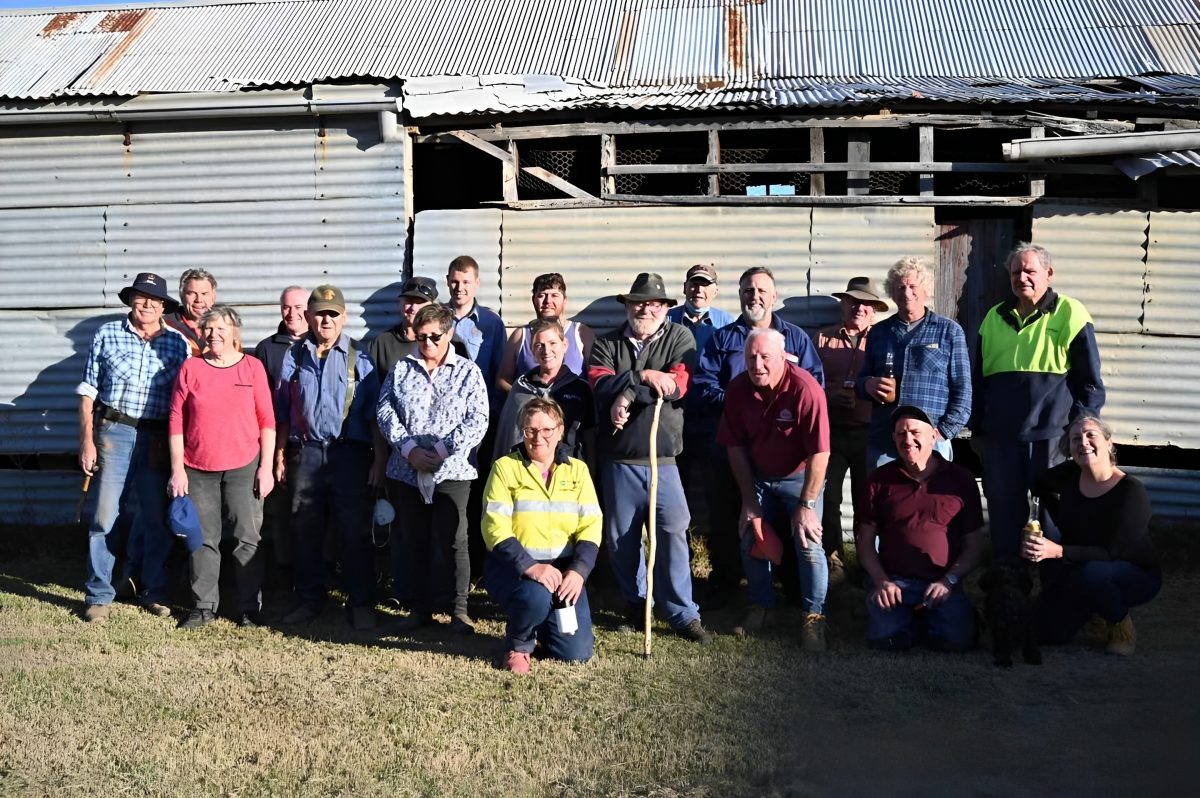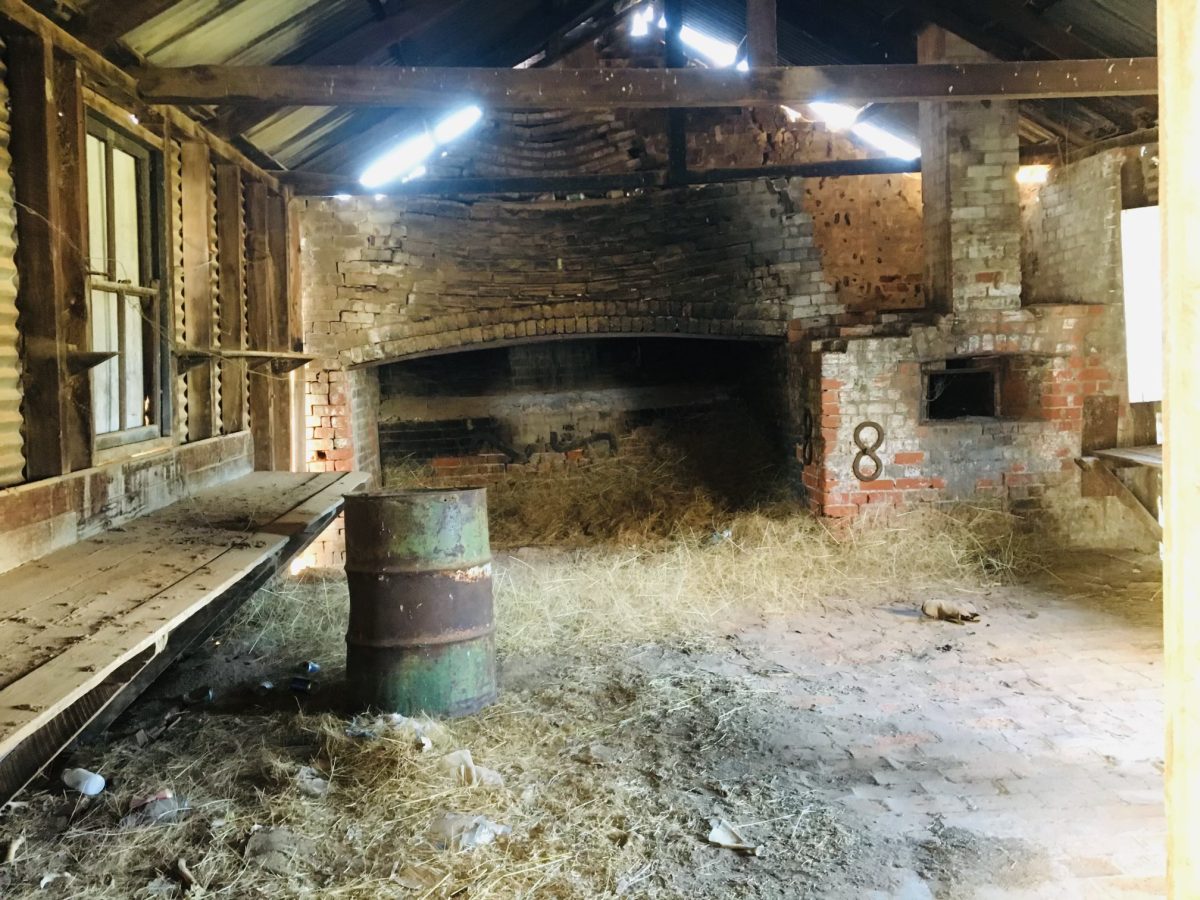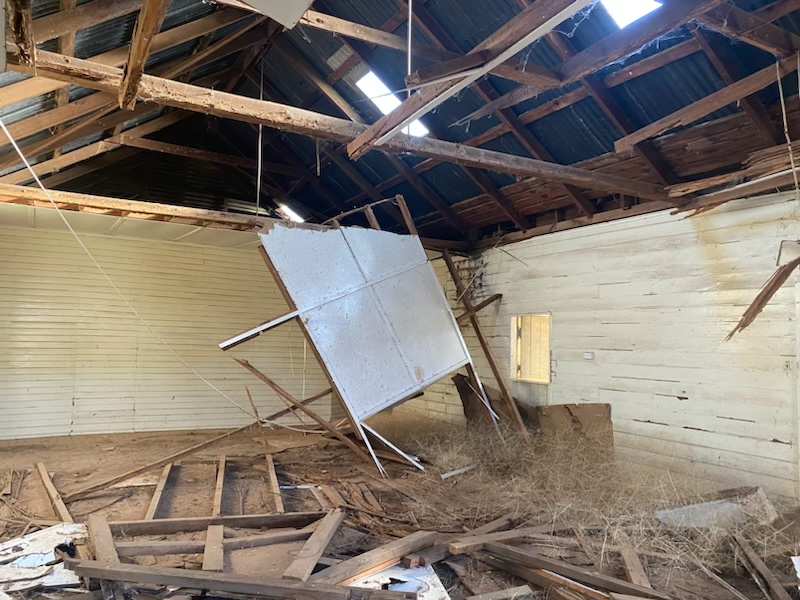
Volunteers have been attending working bees aimed at restoring the shearing quarters. Photo: Supplied.
A grassroots push to restore the Riverina’s largest woolshed and convert it into a museum and major tourist attraction is gaining momentum, with locals hopeful they will officially own five acres of land containing old shearers’ quarters and sheds within weeks.
Toganmain Station, located between Darlington Point and Carrathool, was established in 1867 as one of the first grazing properties in the region.
By the early 1890s, the station covered more than 300,000 acres of land, with around 200,000 sheep shorn each year.
The station is referenced in the songs of legendary Australian poet Banjo Paterson and was also a focal point of violent union uprisings over workers’ right that erupted across Australia in the late 19th century, leading to the birth of the modern labour movement.

The Toganmain Woolshed has seen seven million sheep shorn. Photo: Toganmain Woolshed Precinct.
By the 1990s, however, the landowners left the old woolshed largely unused, focusing instead on large scale cropping. The last sheep were shorn in 2002 and the shearing quarters and sheds have steadily deteriorated since then.
Local history enthusiasts couldn’t bear to see this happen, so in 2014 got together to form the Toganmain Woolshed Precinct, which was incorporated as an association to negotiate with the current landowners – Macquarie Bank’s Paraway Pastoral Company – to take control of the iconic woolshed and shearing quarters’ precinct so the buildings could be conserved and reused.
A volunteer committee and crowd funding campaign were also launched.
Architect Peter Freeman, who has authored a book on historic shearing sheds, is a driving force behind this campaign.
“We have already lost many significant buildings across Australia,” he said. “Our vision is to create a cultural attraction that will educate visitors and preserve that piece of history for generations to come.”
Murrumbidgee Councillor Christine Chirgwin has been negotiating with Macquarie Bank on behalf of locals.
“Macquarie said that they wanted to make sure there was local involvement [in restoring the woolshed] … they gifted us the acreage around the shed and shearers quarters. It’s now in the final stages of getting signed over to us, this should happen in the next few weeks.
“I grew up on a rice/sheep farm. I’ve always just loved sheep and shearing sheds have got a special feel for them … this is a fabulous project. It’s one of the four biggest sheds in the country as far as I am aware, 240 feet long and 80 feet wide. It’s massive.”

The hearth and bread oven have been cleaned up by volunteers. Photo: Christine Chirgwin.
Cr Chirgwin’s vision is to set up an interactive museum in the sheds that tells the history of the shearers, and to provide accommodation quarters for visitors to stay.
She said wool tourism could complement wine tourism in the region, with people visiting historic woolsheds across the Riverina, including at Yanga National Park and Jeraly Woolshed on the Hay Plains.
Over the past few months, she organised well-attended working bees to fix up the shearing quarters.
“We’ve got a really good crew that have come on board, a number of old shearers are keen to see it restored. It’s a great mix of old and young. We took all the doors off the shearing quarters and are repainting them and putting them back up.”
But she said getting the sheds back into shape would require a lot more funding.

There is still a lot more work to be done. Photo: Supplied.
“We really need either corporate sponsorship or government grants. We need to get the floor stabilised and the roof back on. That’s a major project that will cost hundreds of thousands.”
Cr Chirgwin is trying to spread the word to businesses, to see who might help. The public can also make donations via an informative website set up by Mr Freeman, and more volunteers are wanted for future working bees.
“If you come out and see it, you’ll understand why we do it. You’ll understand why we want to save it,” she said.
If you’d like to contribute in any way, you can follow the Friends of Toganmain Facebook page or email Cr Chirgwin at [email protected]









